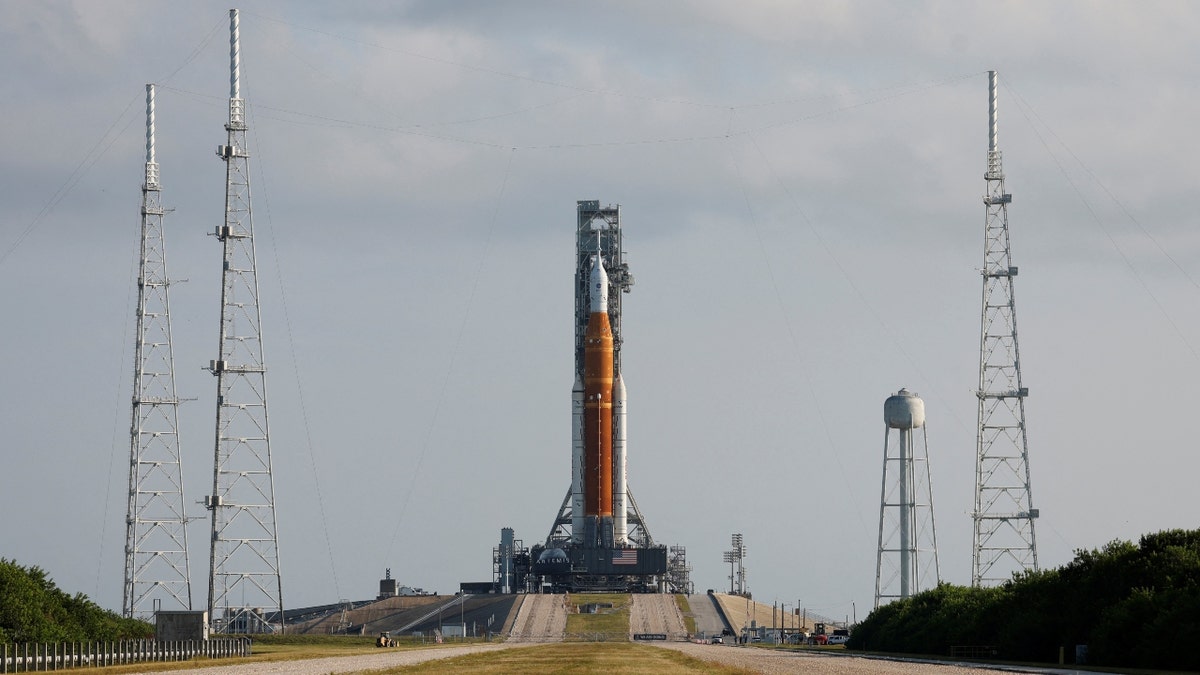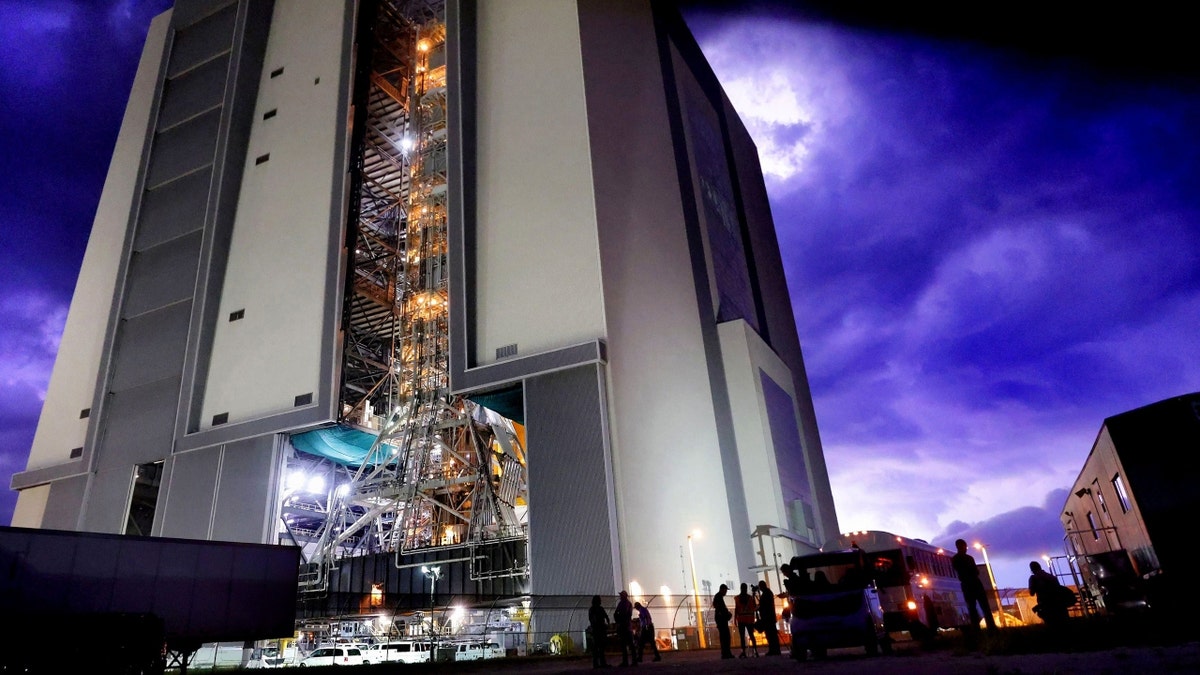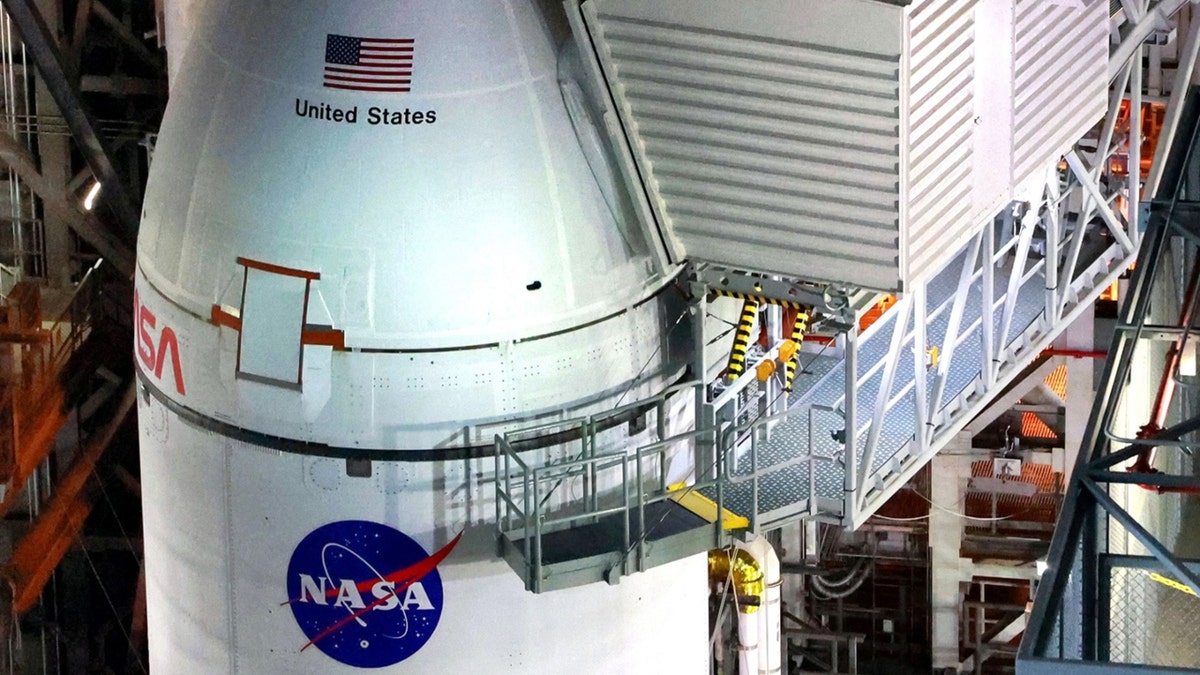Former NASA administrator shares ‘astonishing’ developments in space technology and exploration
Former NASA administrator Jim Bridenstine reveals new technology being developed on the International Space Station and reacts to stunning images of galaxies 13 billion lightyears away.
NASA said that the agency is "go" for next week's launch of the Artemis I mission.
The agency said Monday that the Flight Readiness Review has concluded.
Its teams are proceeding toward a two-hour launch window starting at 8:33 a.m. ET on Aug. 29 at Florida's Kennedy Space Center.
Artemis I marks the first integrated test of NASA’s Orion spacecraft, Space Launch System (SLS) rocket and the ground systems.
NASA'S MOON ROCKET ARRIVES AT LAUNCH PAD FOR 1ST TEST FLIGHT

NASA's next-generation moon rocket, the Space Launch System (SLS) Artemis 1 rocket with its Orion crew capsule stands on launch pad 39B at the Kennedy Space Center in Cape Canaveral, Florida, on Aug. 17, 2022. (Reuters/Joe Skipper)
The 42-day uncrewed flight test around the moon is the first in a series of missions, including future human lunar exploration.
According to NASA, during the flight, Orion will launch on the most powerful rocket in the world.

Lightning lights up clouds over the Vehicle Assembly Building, delaying the rollout of Artemis I, at Kennedy Space Center, Florida, on Aug. 16, 2022. (Joe Burbank/Orlando Sentinel/Tribune News Service via Getty Images)
The spacecraft will journey 280,000 miles from Earth and 40,000 miles beyond the far side of the moon.
STUNNING IMAGES CAPTURE STURGEON SUPERMOON

NASA's Artemis I Moon rocket is rolled out to Launch Pad Complex 39B at Kennedy Space Center, in Cape Canaveral, Florida, on Aug. 16, 2022. (Photo by Chandan Khanna/AFP via Getty Images)
Orion will stay in space longer than any human spacecraft has without docking to a space station, traversing approximately 1.3 million miles in total.
It will also return faster – up to 25,000 miles per hour – before it splashes down off the coast of San Diego on Oct. 10.

Artemis I and the Orion spacecraft shortly before rollout to the launch pad as seen from the high bay level inside the Vehicle Assembly Building at Kennedy Space Center in Florida. (Joe Burbank/Orlando Sentinel/Tribune News Service via Getty Images)
The 322-foot SLS rocket and spacecraft arrived at the launch pad last Wednesday.
CLICK HERE TO GET THE FOX NEWS APP
The site is being shown on a livestream at Pad 39B the NASA Kennedy YouTube Channel.
The backup launch days are on Sept. 2 and Sept. 5.




















